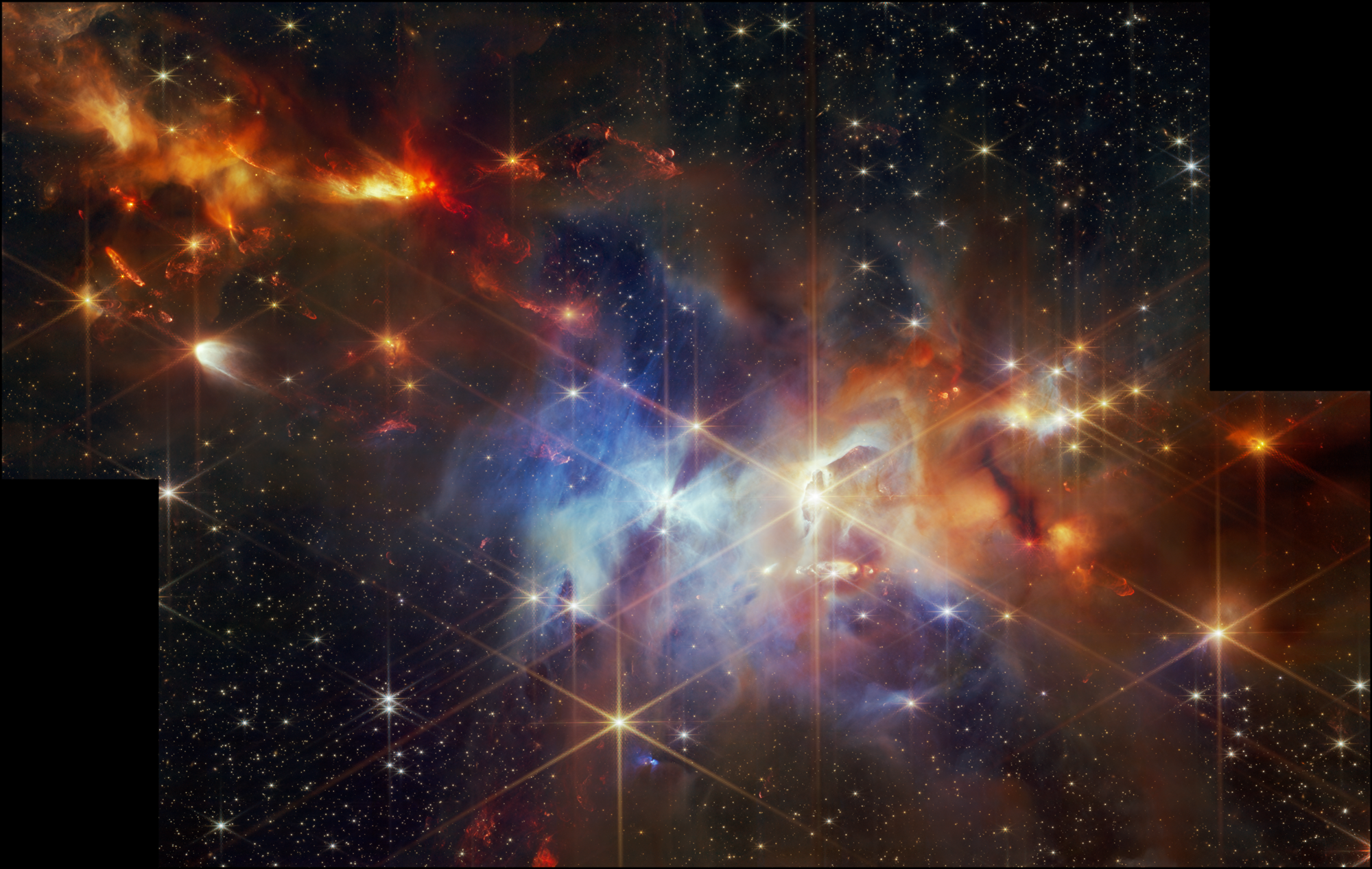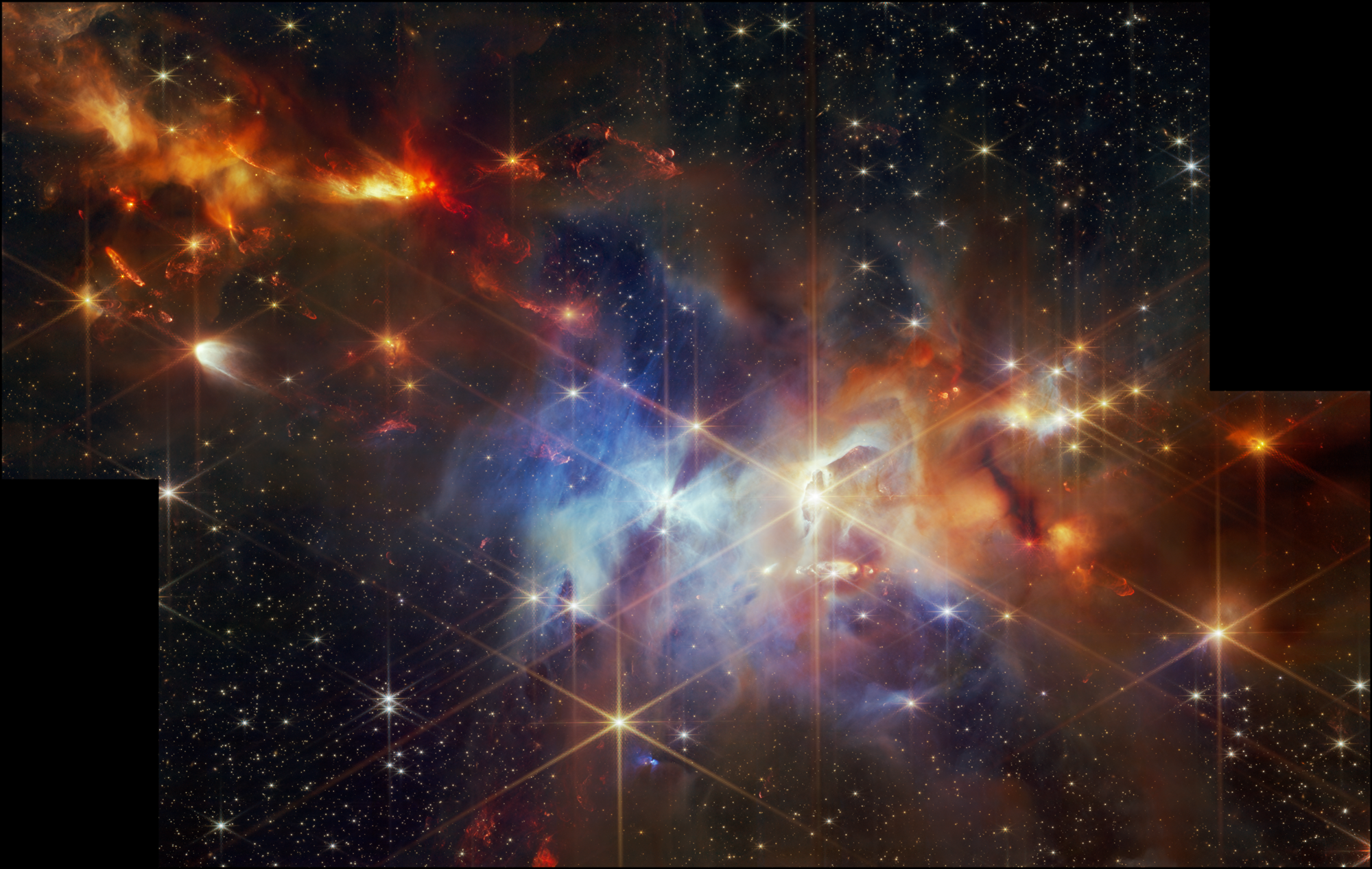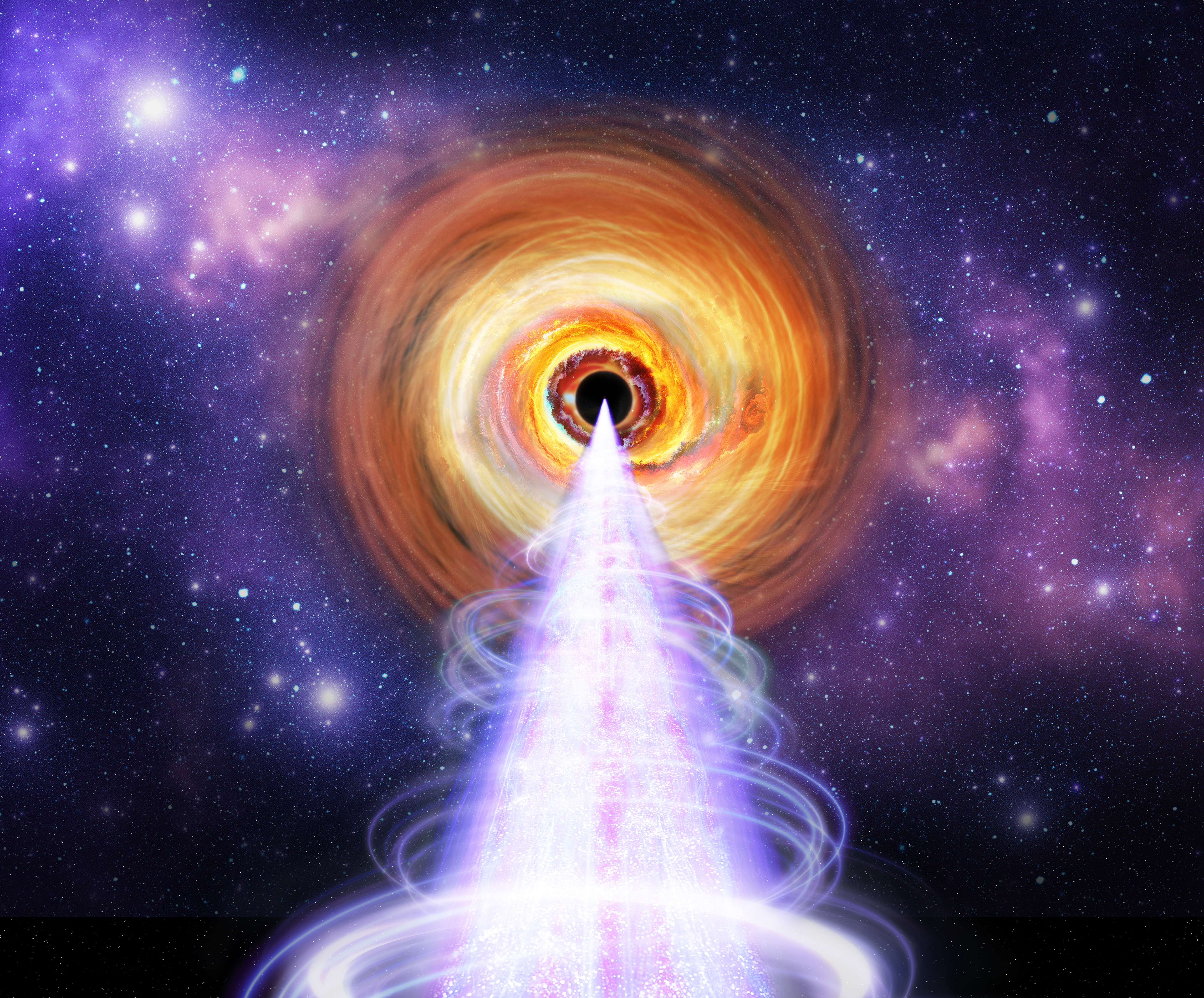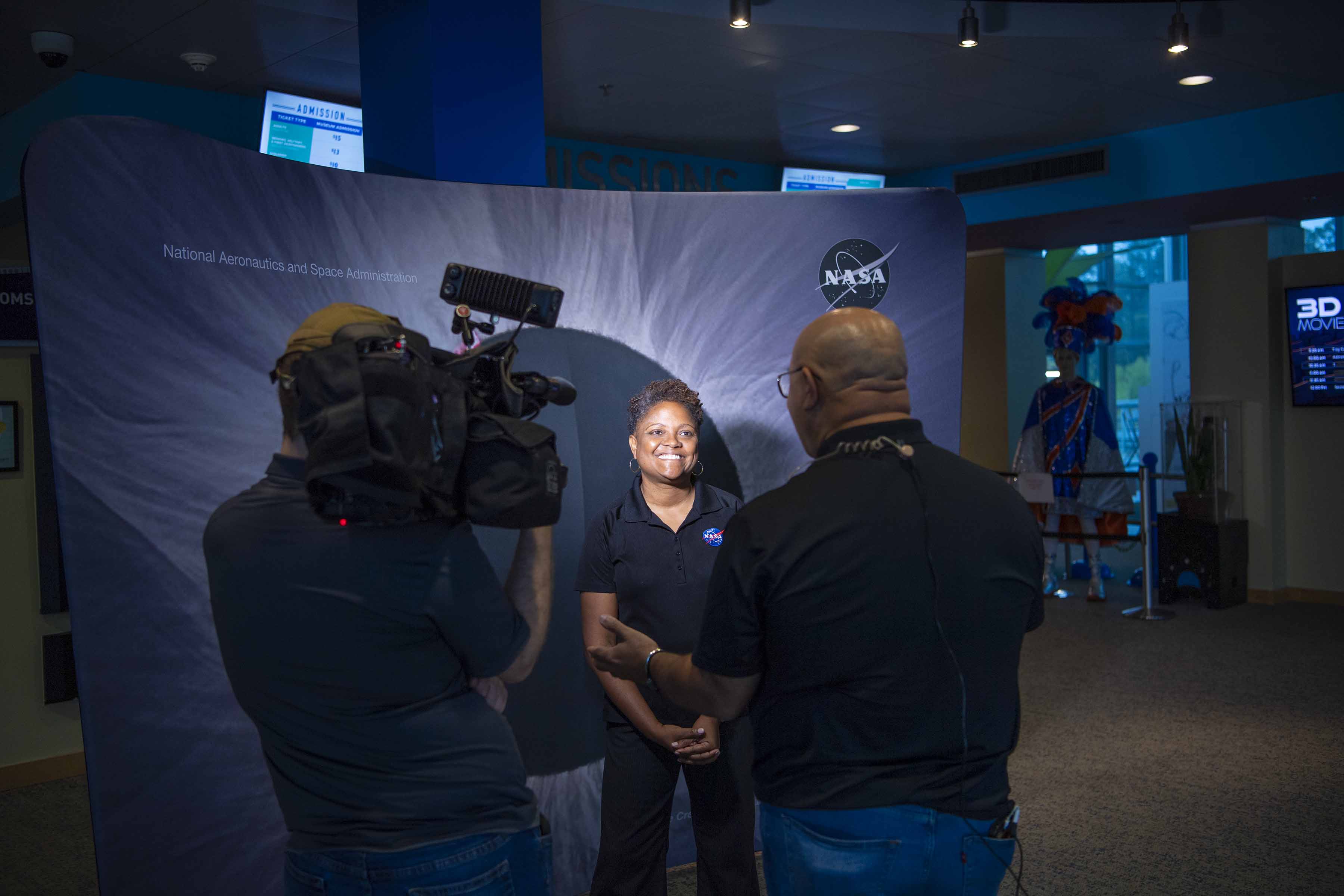Webb Sees Gassy Baby Stars
NASA’s James Webb Space Telescope has captured a phenomenon for the very first time. The bright red streaks at top left of this June 20, 2024, image are aligned protostar outflows – jets of gas from newborn stars that all slant in the same direction. This image supports astronomers’ assumption that as clouds collapse to […]


NASA’s James Webb Space Telescope has captured a phenomenon for the very first time. The bright red streaks at top left of this June 20, 2024, image are aligned protostar outflows – jets of gas from newborn stars that all slant in the same direction.
This image supports astronomers’ assumption that as clouds collapse to form stars, the stars will tend to spin in the same direction. Previously, the objects appeared as blobs or were invisible in optical wavelengths. Webb’s sensitive infrared vision was able to pierce through the thick dust, resolving the stars and their outflows.
Image credit: NASA, ESA, CSA, STScI, Klaus Pontoppidan (NASA-JPL), Joel Green (STScI)
What's Your Reaction?



















.jpg?#)
































